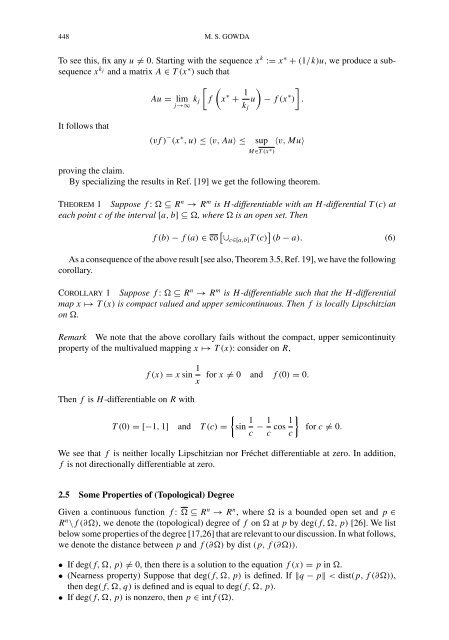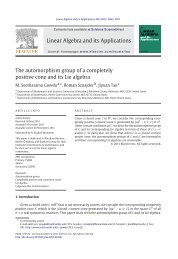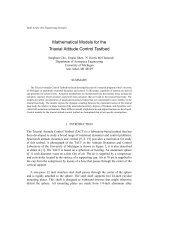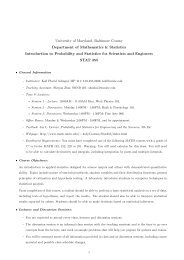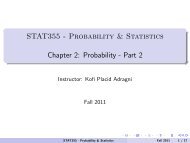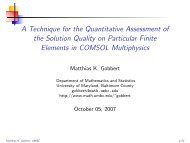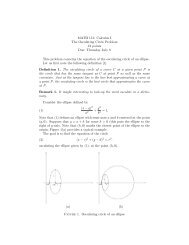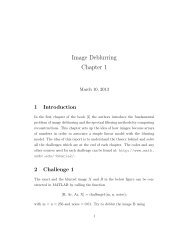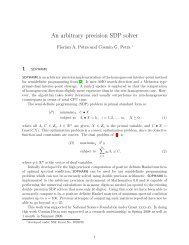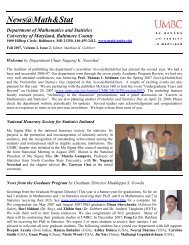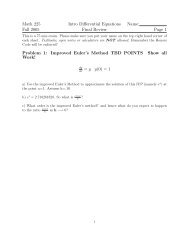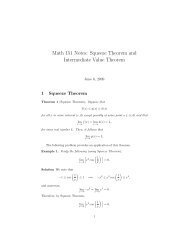inverse and implicit function theorems for h-differentiable and ...
inverse and implicit function theorems for h-differentiable and ...
inverse and implicit function theorems for h-differentiable and ...
- No tags were found...
Create successful ePaper yourself
Turn your PDF publications into a flip-book with our unique Google optimized e-Paper software.
448 M. S. GOWDATo see this, fix any u ̸= 0. Starting with the sequence x k := x ∗ + (1/k)u, we produce a subsequencex k j <strong>and</strong> a matrix A ∈ T(x ∗ ) such that[ (Au = lim k j f x ∗ + 1 ) ]u − f(x ∗ ) .j→∞ k jIt follows that(vf ) − (x ∗ ,u)≤〈v, Au〉 ≤ sup 〈v, Mu〉M∈T(x ∗ )proving the claim.By specializing the results in Ref. [19] we get the following theorem.THEOREM 1 Suppose f : ⊆ R n → R m is H -<strong>differentiable</strong> with an H -differential T(c)ateach point c of the interval [a,b] ⊆ , where is an open set. Thenf(b)− f(a)∈ co [ ∪ c∈[a,b] T(c) ] (b − a). (6)As a consequence of the above result [see also, Theorem 3.5, Ref. 19], we have the followingcorollary.COROLLARY 1 Suppose f : ⊆ R n → R m is H -<strong>differentiable</strong> such that the H -differentialmap x ↦→ T(x)is compact valued <strong>and</strong> upper semicontinuous. Then f is locally Lipschitzianon .Remark We note that the above corollary fails without the compact, upper semicontinuityproperty of the multivalued mapping x ↦→ T(x): consider on R,f(x)= x sin 1 x<strong>for</strong> x ̸= 0 <strong>and</strong> f(0) = 0.Then f is H -<strong>differentiable</strong> on R withT(0) = [−1, 1] <strong>and</strong> T(c)={sin 1 c − 1 c cos 1 }c<strong>for</strong> c ̸= 0.We see that f is neither locally Lipschitzian nor Fréchet <strong>differentiable</strong> at zero. In addition,f is not directionally <strong>differentiable</strong> at zero.2.5 Some Properties of (Topological) DegreeGiven a continuous <strong>function</strong> f : ⊆ R n → R n , where is a bounded open set <strong>and</strong> p ∈R n \f(∂), we denote the (topological) degree of f on at p by deg(f,,p)[26]. We listbelow some properties of the degree [17,26] that are relevant to our discussion. In what follows,we denote the distance between p <strong>and</strong> f(∂)by dist (p, f (∂)).• If deg(f,,p)̸= 0, then there is a solution to the equation f(x)= p in .• (Nearness property) Suppose that deg(f,,p) is defined. If ‖q − p‖ < dist(p, f (∂)),then deg(f,,q)is defined <strong>and</strong> is equal to deg(f,,p).• If deg(f,,p)is nonzero, then p ∈ intf ().


